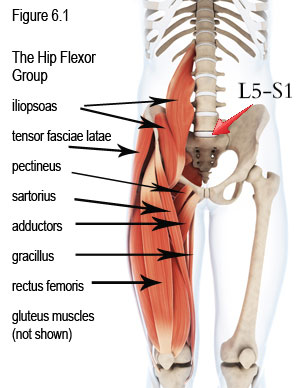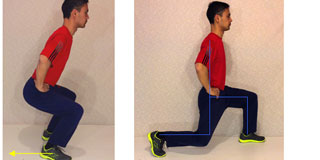
Reverse Lunge This Way to Save Your Glutes & Back
Weak gluteal muscles: A major cause of lower back pain
By Sherwin Nicholson | May 4, 2020
Before you begin with the exercise, consider the following:
Unless you are an athlete who trains them proactively, you probably already have weak gluteus muscles, specifically the gluteus maximus. It is one of the strongest yet most neglected muscles needed to protect your spine.
Keeping your G. maximus active is necessary for pain relief. Its engagement is important because it activates to mobilize the hips and legs which greatly reduces the workload for your back. Your glutes are so important that virtually all athletes depend on its’ power and responsiveness to maximize at their own sport. The success of their outcome is dependent on keeping them well conditioned and actively responsive.
If you are sitting at work all day or drive a lot, you are deactivating your glutes. They no longer remain the primary mover for your body.
It’s important for them to be the first muscle to respond whenever you raise and lower yourself and not other leg muscles such as your quadriceps.
Your thighs must take over (suffer) to help
With the primary movers deactivated, the quadriceps (thighs) wind up having to compensate to do the work.
So what’s the big deal?
You see, you quads are your secondary movers, not the primary. Any time the leg muscles don’t work in proper order, there will be a mechanical issue. For all of us, this translates to hip, knee and back strain. Then eventually the thigh will begin to also become sore along with your butt muscles.
An athlete CANNOT afford to neglect training their glutes because this is where they get a great deal of their power and performance from. Intense training protects them from being sidelined from potential back issues.
A sure sign that something is not working right is when your knees begin to hurt as your bend them.
Well what can I do about it?
There are quite a few places to begin and a host of good exercises to help you but one of the best places to start is with the Reverse Lunge as I have detailed below.
The added benefit of this movement is that not only as your glutes become stronger, so do your hips, as well as your knees.
Certain forms of knee pain can be significantly reduced with this exercise if done as instructed.
The Reverse Lunge (along with the Seated Lunge) is a very good for helping you when long periods of sitting are necessary. It is #5 of the Challenge Exercises in the Program.
Doing the Reverse Lunge helps to:

- Return you to neutral tilt (for even disc pressure, reduces posterior pelvic tilt).
- Gently stretch your psoas ( a common area for lumbar pain).
- Stretch your rectus femoris (thigh to reduce anterior pelvic tilt).
- Strengthen and activate your maximus (vital for lumbar support and protection and mobility).
- Strengthen and condition your back muscles (upper and lower to help maintain a neutral spine, reduces back spasms).
Use the Reverse Lunge as the primary method to enter either a stooping or kneeling position rather than bending over.
Do this movement while sitting and during your breaks. (It is important to have consent from your family doctor prior to any exercise routine such as the Reverse Lunge.)
Reverse Lunge
Step 1: Lower your hips down into a squat position. Keep your feet shoulder width apart. Your thighs should be just above parallel to the floor. Place your hands on your hips.

This is one of the most important movements you must practice in order to overcome your pain.
Step 2: Bring one leg behind until the thigh is vertical to the floor. Do not allow your knee to touch the floor. Use your hands on your hips to adjust and maintain your hips level and facing forward. Your spine should be straight and upright.
Step 3: Hold this position for 1-10 seconds.
Step 4: Slowly bring your rear leg to the forward squat position. Keep your thigh parallel to the floor.
Step 5: Hold this position for 1-10 seconds.
Step 6: Return to a standing position and relax.
Step 7: Repeat often.
Tip: If you contract your gluteus maximus before you step backwards, it will improve its ability to activate at the right time during most activities. By stepping further back with the rear leg, you can stretch the psoas for greater benefit.
Reverse lunge to lower your body during everyday tasks. This method is a safer alternative to leaning or bending over to pick up or reach. Don’t lean over to tie your shoes anymore but lunge instead.
Please go ahead and try these other exercises to help restrengthen your legs. They are worth the time and effort. When you are ready for more, there are 4 stages just like these to get you well conditioned and proactive. You’ll learn just how to move the right way anytime and you’ll feel much better for it. Anytime you want while you are mastering the moves, you can drop me an email for support. I’ll be there for you! -Sherwin
“I like this book very much and have found it to be quite helpful and informative, and a great helper with my lumbar pain issues.”
“The program is improving with my flexibility and mobility so far, two of my more common back complaints.”
Testimonials from satisfied customers with the Program
